Hot Tub Maintenance: Complete Expert Guide + Cost Calculator
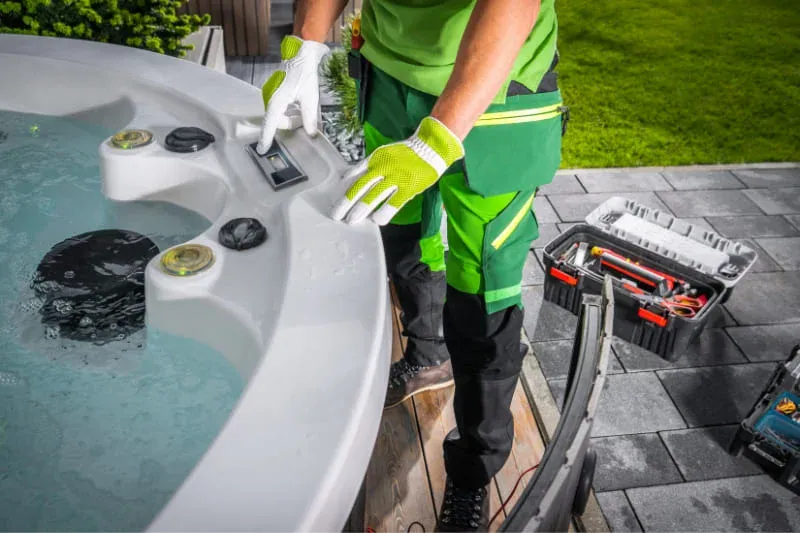
Did you know that proper hot tub maintenance can save you over $2,000 annually in repairs and extend your spa’s life by 5-10 years? With hot tub maintenance costs ranging from $500 to $1,000 per year, smart maintenance strategies become crucial for protecting your investment!
As the founder of HomeInDepth.com, with over a decade of researching home leisure products, I’ve personally tested dozens of hot tubs and analyzed maintenance costs across different systems. My analytical background as a chartered accountant, combined with extensive hands-on testing and consultation with industry experts, gives me a unique perspective on the real costs and best practices for hot tub care.
Key Takeaways
- Use our cost calculator to budget your exact annual maintenance expenses (typically $500-1,000)
- Test water weekly – pH (7.2-7.8), alkalinity (80-120 ppm), chlorine (1-3 ppm)
- Clean filters monthly with a 3-step process: rinse, spray, soak
- Drain and refill every 3-4 months or when TDS exceeds 1,500 mg/l
- Daily checks take 2 minutes: cover security, temperature, and visual inspection
- Annual costs range $500-1,000 but can be reduced 40-60% with proper care
- Emergency procedures for power outages, equipment failure, and water contamination
Whether you own a traditional acrylic spa, a modern saltwater system, or a budget-friendly inflatable model, I’ll show you exactly how to maintain crystal-clear water while minimizing costs.
This isn’t just another basic hot tub maintenance guide – you’ll discover professional secrets, cost-saving hacks, and emergency protocols that most articles completely ignore. Ready to become a hot tub maintenance expert and protect your investment?
Table of Contents
Hot Tub Maintenance Cost Calculator & Budget Planning
Let’s start with the numbers that matter most to your wallet. According to research, hot tub maintenance costs range from $500 to $1,000 per year, but smart maintenance strategies can reduce these expenses by 40-60%.
Hot Tub Cost Calculator: Get Your Personalized Budget
Use this calculator to get accurate cost estimates based on your specific hot tub setup, usage patterns, and local conditions. Simply input your details below to discover your expected monthly and annual maintenance costs, plus receive customized money-saving recommendations tailored to your situation.
🧮 Hot Tub Annual Cost Calculator
About Our Calculator Data:
- These calculations are based on 2024 industry reports from ConsumerAffairs, market research from Global Market Insights, and real-world cost data from leading spa manufacturers, including Hot Spring, Sundance, and Jacuzzi.
- Chemical costs reflect current pricing from major suppliers, while electricity calculations use EPA energy efficiency standards and average utility rates across the US.
Money-Saving Strategies That Work
- Buy chemicals in bulk: Purchase starter chemical kits for $200 annually instead of buying individual bottles (saves 30-40%).
- Maintain proper water balance: Balanced water requires fewer chemicals and prevents equipment damage. Using products like O-Care can reduce chlorine needs by up to 78%.
- Energy-efficient operation: Newer hot tub models average around $1 per day in energy costs, while older models cost significantly more.
- Professional vs. DIY maintenance: Basic maintenance saves $200-400 annually compared to full-service contracts, but annual professional inspections ($100-150) prevent major repairs.
Essential Water Chemistry Mastery
Water chemistry is the foundation of hot tub maintenance. Get this right, and everything else becomes easier.
Core Chemical Levels You Must Know
pH Level: 7.2-7.8
Your water’s pH measures acidity or alkalinity. Too low (acidic) causes equipment corrosion and skin irritation. Too high (alkaline) makes sanitizers ineffective and causes cloudy water.
Total Alkalinity: 80-120 ppm
Alkalinity acts as a buffer for pH levels. Think of it as your water’s stability system. Always adjust alkalinity first, then pH. To know more, read my article on how to lower alkalinity in a hot tub.
Free Chlorine: 1-3 ppm Bromine: 2-4 ppm
Your sanitizer kills bacteria and keeps water safe. Maintain chlorine at 3 ppm for optimal effectiveness.
Calcium Hardness: 150-250 ppm
Prevents equipment corrosion (too low) and scale buildup (too high).
Total Dissolved Solids (TDS): Maximum 1,500 mg/l
When TDS exceeds this level, drain and refill your hot tub.
Professional Testing Techniques
Test water weekly to monitor pH, alkalinity, hardness, and sanitizer levels. Professional technicians recommend:
- Test strips: Quick and convenient, but less accurate
- Liquid test kits: More precise results for serious maintenance
- Digital testers: Most accurate, worth the investment for frequent users
Troubleshooting Water Chemistry Problems
- Cloudy water: Usually indicates low sanitizer levels or poor filtration
- Green water: Algae growth from insufficient sanitizer
- Foamy water: Caused by cosmetics, detergents, or low calcium hardness
- Strong chemical smell: Indicates chloramines (used-up chlorine) – shock treatment needed

Hot Tub Filter Maintenance and Replacement Guide
Your filters work 24/7 to keep water clean. Professional maintenance involves three methods: rinse, spray, and soak.
The Three-Step Cleaning System
Weekly Rinse (5 minutes)
Remove filters and rinse with a garden hose using moderate pressure. Use a hose with moderate water pressure to avoid damaging the filter. This removes surface debris and extends filter life.
Monthly Chemical Cleaning (15 minutes)
Apply filter cleaner specifically designed for hot tub filters. Thoroughly spray the filter, paying attention to all pleats and crevices. Let the chemical work for the recommended time, then rinse thoroughly. For detailed step-by-step instructions, see our complete guide on how to clean a hot tub filter.
Quarterly Deep Cleaning (Overnight)
Soak filters in hot tub filter cleaning solution to remove stubborn contaminants trapped in filter media. This restores maximum filtration efficiency.
Filter Replacement Schedule
Replace outer filter every 18 months ($60) and inner filter every 6 months ($40). Watch for these replacement indicators:
- The filter fabric looks frayed or damaged
- Pleats won’t clean completely
- Reduced water circulation despite cleaning
- Water stays cloudy after balancing the chemistry
Pro Tip: Keep spare filters in rotation. While one set soaks in cleaner, use the backup set to maintain continuous filtration.
Complete Drain and Refill Procedures
Drain and refill your hot tub every 3-4 months, or more frequently with heavy use.
When to Drain Your Hot Tub
Calculate using this formula: Gallons ÷ (Daily Users × 3) = Days
(For example: 400-gallon spa ÷ (4 people × 3) = drain every 33 days)
Other drain indicators:
- TDS exceeds 1,500 mg/l
- Water chemistry becomes difficult to balance
- Water develops a persistent odor or cloudiness
- Extreme difficulty maintaining proper chemical ranges
Step-by-Step Draining Process
- Before draining: Add line flush cleaner and run jets for 15 minutes. This removes biofilm and buildup from plumbing.
- Drain completely: Use a drain valve or a submersible pump. Most hot tubs take 1-2 hours to empty. For complete draining instructions and safety tips, follow our detailed how to drain a hot tub guide.
- Clean while empty: Wipe down shell with non-abrasive spa cleaner. Consult the hot tub manufacturer’s guidelines for recommended cleaning products. For thorough cleaning techniques and product recommendations, reference our How to clean a hot tub guide.
- Refill properly: Use a garden hose with a pre-filter if your water has high mineral content. Fill through the filter compartment to prevent airlocks.
- Initial chemical balance: Start with higher chlorine levels (5-8 ppm) for initial sanitization, then reduce to normal levels (2-4 ppm).
Hot Tub Cover Care and Protection
Your cover does more than keep debris out – it’s critical for energy efficiency and safety.
Weekly Cover Maintenance
- Clean cover with mild soap and warm water.
- Use the manufacturer’s guidelines and avoid abrasive materials or harsh chemicals.
- After drying, apply vinyl protector (non-alcohol, non-oil-based) to prevent UV damage.
Cover Replacement Indicators
Hot tub covers generally last 3-5 years before needing replacement. Replace when you notice:
- Water saturation (cover feels heavy)
- Cracking or tearing vinyl
- Broken latches or hinges
- Sagging that allows heat loss
- Visible mold or mildew inside the foam
Cost planning: New covers range from $200-500, depending on size and type.

Daily, Weekly, and Monthly Cleaning Routines
Consistent cleaning prevents major problems and keeps maintenance costs low.
Daily Checks (2 minutes)
- Verify the cover is secure and locked
- Check water temperature and adjust as necessary
- Note any drastic temperature changes, as they could indicate system issues
- Quick visual inspection for debris or damage
Weekly Tasks (15 minutes)
- Water testing and balancing: Test Total Alkalinity, pH level, Total Hardness, and sanitizer levels, then adjust chemicals as needed
- Surface cleaning: Skim the water surface and clean the waterline with spa-safe cleaner. Even covered spas accumulate dust and oils that need weekly attention.
- Jet inspection: Run jets at high speed for 5 minutes to ensure proper operation and circulation.
Monthly Deep Tasks (45 minutes)
- Filter maintenance: Remove and chemically clean all filters following the three-step process.
- Shell cleaning: Drain hot tub if needed and use non-abrasive cleaner with soft brush or cloth to scrub shell gently
- Equipment check: Inspect pumps, heaters, and control panels for proper operation. Make sure all jets are working correctly and aren’t blocked.
Seasonal Maintenance Strategies & Climate Considerations
Your maintenance routine should adapt to seasonal changes and local climate conditions.
Spring Startup Procedures
After winter storage or reduced use:
- Inspect all equipment for winter damage
- Replace filters if stored for an extended period
- Refill and balance the water chemistry completely
- Test all systems before the first use of season
Summer Maintenance Challenges
High-temperature operation:
- Test water chemistry more frequently (heat accelerates chemical consumption)
- Bromine stays stable in high temperatures, while chlorine can become less effective
- Increase filtration cycles during peak usage periods
UV exposure:
- Cover protection becomes critical
- Check and treat the cover more frequently
- Consider shade structures for outdoor installations
Fall Preparation
- Deep clean before the reduced usage period
- Winterization can cost $100-200, depending on the hot tub size and system complexity
- Inspect and service equipment before cold weather
Winter Operation vs. Winterization
You have two options for winter hot tub care, depending on your situation:
Year-round operation (Recommended for most users)
Keep your hot tub running all winter with normal maintenance. Most quality hot tubs handle freezing temperatures well with proper insulation and heating. This option costs less than winterization and allows year-round enjoyment.
Full winterization (For specific situations)
Completely drain and shut down your hot tub for winter. This is required for:
- Extended absences (vacations longer than 2 weeks)
- Extremely cold climates where freezing risk is high
- Vacation homes that won’t be used for months
Spring reopening typically costs $100-150 for refilling and chemical balancing.

Advanced Equipment Maintenance & Professional Diagnostics
Move beyond basic maintenance with professional-level equipment care.
Pump and Motor Care
Monthly inspection:
- Listen for unusual noises (grinding, squealing)
- Check for leaks around pump seals
- Verify proper water flow and pressure
Annual maintenance:
- Lubricate motor bearings if accessible
- Check electrical connections for corrosion
- Ensure trained staff handle equipment maintenance on weekends when usage is highest
Heater Efficiency Optimization
Signs of heater problems:
- Slow heating or temperature fluctuations
- Drastic temperature changes that could indicate serious system issues
- Unusual odors during heating cycles
- Higher than normal energy bills
Professional maintenance:
- Scale removal from heating elements
- Sensor calibration and testing
- Electrical connection inspection
Control System Diagnostics
Modern hot tubs include sophisticated control systems requiring specialized knowledge:
- Error code interpretation: Learn your system’s error codes for quick troubleshooting
- Sensor cleaning: SmartTub systems provide diagnostic information and maintenance alerts
- Software updates: Some systems require periodic updates for optimal performance
Smart Technology Integration & Modern Systems
2025 brings revolutionary advances in hot tub automation and monitoring that make maintenance easier and more efficient than ever.
Smart Water Monitoring Systems
- FreshWater IQ System: Automatically tests water every hour and provides step-by-step adjustment instructions. This patented technology eliminates guesswork and reduces maintenance time significantly.
- SmartTub Cellular Control: Provides maintenance reminders, energy usage estimates, and diagnostic capabilities. Your dealer receives alerts automatically for proactive service.
Automated Chemical Systems
- Salt water systems: Generate chlorine automatically from salt, reducing harsh chemical exposure
- UV-C sanitization: Requires bulb replacement notifications through smart systems
- Ozone systems: Use corona discharge technology to automatically generate sanitizing ozone gas
Smart Home Integration & Energy Management
- Voice control compatibility: Amazon Alexa and Google Home integration for hands-free operation
- App-based management: Smartphone apps allow temperature adjustment, filtration scheduling, and maintenance reminders from anywhere
- Smart Heat features: Automatically adjusts temperature when the spa isn’t being used, optimizing energy efficiency
- Predictive heating: Learn usage patterns and preheat accordingly for maximum convenience
- AI-powered optimization: Systems learn usage patterns and adjust automatically for maximum efficiency
- Energy harvesting: Capture energy from jets and pumps to power heating systems
- Automated diagnostics: Real-time system monitoring ensures optimal performance and predictive maintenance alerts

Emergency Maintenance & Rapid Response Protocols
Every hot tub owner should know these emergency procedures.
Power Outage Procedures
Immediate actions:
- Turn off the main breaker to prevent power surge damage
- Remove the cover to prevent equipment damage from trapped gases
- Document the outage duration for insurance purposes
Extended outages (winter):
- Drain equipment if freezing temperatures expected
- Protect plumbing with antifreeze designed for spas
- SmartTub systems send power outage notifications to users and dealers
Equipment Failure Emergency Response
Pump failure:
- Shut off the power immediately
- Drain water if freezing conditions exist
- Contact the service technician within 24 hours
Heater malfunction:
- Note any drastic temperature changes, as they indicate serious system issues
- Check for error codes on the control panel
- Avoid using the spa until a professional diagnosis
Water Contamination Rapid Recovery
Suspected contamination:
- Remove all users immediately
- Don’t let anyone use a hot tub if they’re sick with diarrhea
- Shock treat with 5-10 times the normal chlorine dose
- Run filtration continuously for 24 hours
Green or cloudy water:
- Test and balance all chemical levels
- Clean or replace filters immediately
- Add a clarifier, if needed, after the chemical balance is restored
Chemical Accident Response
Skin contact with concentrated chemicals:
- Rinse immediately with clean water for 15 minutes
- Remove contaminated clothing
- Seek medical attention for burns or persistent irritation
Chemical mixing accidents:
- Evacuate the area immediately if gases are produced
- Never mix different pool chemicals, as they can produce poisonous gases or cause explosions
- Ventilate the area before cleanup
Troubleshooting Common Problems & Solutions
Master these diagnostic skills to solve 90% of hot tub issues yourself.
Water Quality Problems
Cloudy water causes and fixes:
- Low sanitizer: Increase chlorine/bromine and test daily
- Poor filtration: Clean or replace filters immediately
- High pH: Use pH decreaser to restore the 7.2-7.8 range
- Contaminants: Shock treat and improve filtration
Foam formation troubleshooting:
- Low calcium hardness: Add calcium increaser to reach 150-250 ppm
- Soap residue: Shock treat and educate users about pre-soak showering
- Contamination: Ensure users shower before entering
Unusual odors and solutions:
- Chloramine smell: Shock treat to break down used chlorine
- Musty odor: Clean and disinfect the cover and shell thoroughly
- Chemical imbalance: Test and balance all parameters
Equipment Malfunctions
Circulation problems:
- Clogged filters causing inefficient operation
- Air locks from improper filling
- Pump prime loss requiring professional service
Heating issues:
- Older, less energy-efficient models cost more to operate
- Scale buildup on heating elements
- Sensor malfunction requiring calibration
Control system errors:
- SmartTub systems help diagnose problems and alert dealers
- GFCI trips indicating electrical issues
- Sensor cleaning or replacement is needed

Health and Safety Guidelines
Hot tub safety protects your family and ensures optimal health benefits.
CDC Safety Recommendations
Essential safety rules:
- Don’t swallow the water
- Stay out if you’re sick with diarrhea
- Don’t let children under 5 use hot tubs
- Don’t drink alcohol before or during use
- Shower before entering
- Pregnant women should consult healthcare providers
Temperature and Time Limits
Temperature safety: Prevent water temperature from exceeding 104°F (40°C)
Usage guidelines:
- Children should limit sessions to 5 minutes, with a maximum of 15 minutes total
- Adults: 15-20 minute sessions recommended
- Lower the temperature to 98°F when children use the hot tub
For complete temperature guidelines and optimal settings for different situations, see our detailed hot tub temperature guide.
Health Benefits of Proper Hot Tub Maintenance
- Safe water quality: Proper chemical balance ensures your hot tub water is free from harmful bacteria and contaminants that could cause illness
- Skin and eye comfort: Well-maintained pH levels prevent irritation, rashes, and burning sensations during soaking
- Legionella prevention: Regular maintenance prevents the growth of bacteria that causes Legionnaires’ disease
- Optimal therapeutic conditions: Clean, balanced water allows you to fully enjoy hydrotherapy benefits without health risks
For a comprehensive overview of all the therapeutic advantages hot tubs provide, explore our complete hot tub benefits guide.
Environmental Responsibility & Chemical Disposal
Proper disposal protects the environment and complies with regulations.
Chemical Disposal Guidelines
Never dispose of pool chemicals in regular trash, as they can spill, mix, and create dangerous reactions, including fires or toxic gases
Proper disposal methods:
- Use household hazardous waste (HHW) facilities staffed by trained professionals
- Contact the local Solid Waste Authority for collection programs
- Check with pool supply stores for take-back programs
Water Conservation Strategies
Extend water life:
- Maintain proper chemical balance
- Use enzyme products to break down organic waste
- Salt systems can keep water clean for up to a full year
Efficient drainage:
- Use old spa water for landscape irrigation (after chlorine dissipates)
- New technologies recycle and filter water more efficiently
Eco-Friendly Alternatives
2025 innovations include:
- Biodegradable chemical alternatives
- Energy harvesting systems that capture power from jets and pumps
- Solar heating integration
- AI-powered optimization for reduced resource consumption

Professional Maintenance vs. DIY Decision Guide
Know when to handle maintenance yourself and when to call experts.
DIY Maintenance Tasks
Safe for homeowners:
- Water testing and chemical balancing
- Filter cleaning and replacement
- Basic shell and cover cleaning
- Visual equipment inspections
- Following manufacturer guidelines and local codes
Required knowledge:
- Understanding of pool and spa operation fundamentals reduces risk and liability
- Chemical safety and proper storage
- Basic troubleshooting skills
Professional Service Requirements
- Electrical work: Ensure proper electrical safety and GFCI protection
- Major repairs: Pump, heater, or control system replacement
- Warranty service: Maintain the manufacturer’s warranty through authorized technicians
- Annual inspections: Professional service helps identify problems and extend equipment life
Certification and Training
CPO Certification: Provides knowledge, techniques, and skills for proper pool and spa operation
Benefits of professional service:
- Training covers CDC, CMAHC, and ISPSC standards
- Access to commercial-grade chemicals and equipment
- Warranty protection and insurance coverage
Cost-Effective Maintenance Strategies
Maximize your investment with smart maintenance approaches.
Preventive Maintenance ROI
- Equipment protection: Proper maintenance prevents equipment failure and extends the hot tub’s lifespan
- Energy savings: Well-maintained systems operate more efficiently, reducing monthly costs
- Chemical efficiency: Balanced water requires fewer chemicals and shock treatments
Bulk Purchasing Strategies
- Annual chemical kits: $200 starter kits provide better value than individual purchases
- Filter rotation systems: Buy multiple filter sets for continuous operation during cleaning cycles
- Seasonal preparation: Join chemical clubs for 10% savings on all purchases
Long-term Investment Planning
- Cover replacement fund: Budget $50-100 annually for eventual cover replacement
- Equipment lifecycle: Plan for major component replacement every 10-15 years
- Energy efficiency upgrades: Consider smart controls and energy-efficient heating systems for long-term savings
When major repairs exceed 50% of your hot tub’s current value, it may be time to consider replacement. For guidance on disposal and replacement decisions, see our How to get rid of a hot tub guide.
Conclusion
Mastering hot tub maintenance isn’t rocket science – it’s about developing smart routines that save time and money while ensuring peak performance. With the strategies in this guide, you’ll reduce maintenance costs by up to 60% while enjoying crystal-clear water year-round!
Start with weekly water testing and proper chemical balance – your foundation for everything else. Then build your routine with filter rotation, seasonal adjustments, and smart technology integration. Remember, consistent preventive care prevents 90% of major issues and can extend your spa’s life by 5-10 years.
Your spa is more than just a purchase – it’s an investment in relaxation, health, and family time. By following these professional maintenance strategies, you’re protecting that investment while maximizing your enjoyment.
Ready to take your hot tub maintenance to the next level? Start with proper water chemistry today, and your spa will reward you with years of trouble-free relaxation and significantly lower operating costs. Happy soaking!
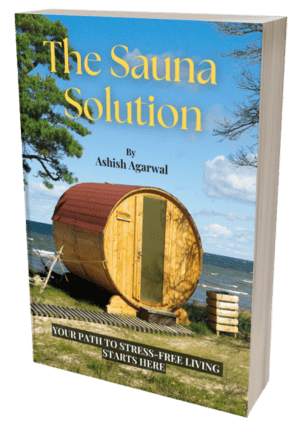
“Become a Sauna Expert Overnight!”
Grab Your “FREE” Sauna E-book NOW!
Get your hands on the ultimate sauna manual. From history to DIY setups, our free guide has it all.

As a Chartered Accountant turned sauna enthusiast, I bring a unique blend of analytical skills and hands-on experience to the world of heat therapy. With over a decade dedicated to researching and testing sauna products and practices, I’ve developed a deep understanding of this field. A the founder of HomeInDepth.com, I provide reliable, easy-to-understand information on all aspects of saunas. My goal is to guide you through every step of your sauna journey, offering meticulously researched, unbiased advice to help you make informed decisions and create your perfect sauna experience. I’m always happy to hear from sauna lovers like you—feel free to leave questions or share your own tips in the comments below so we can learn together. Contact me on:


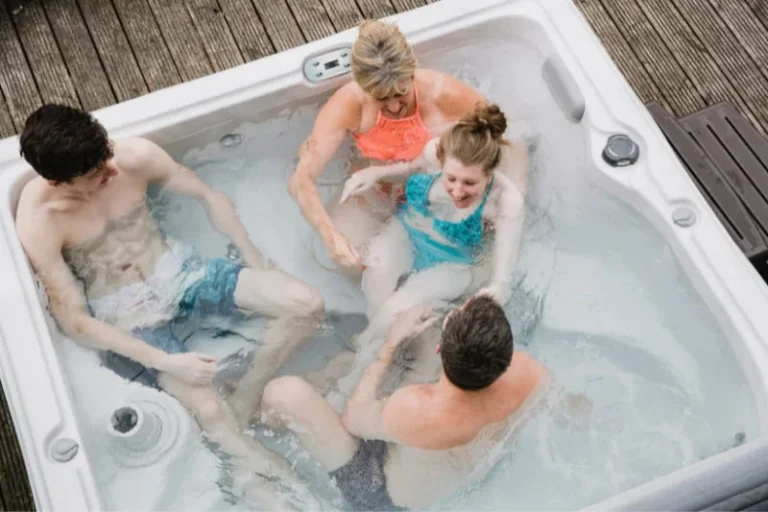

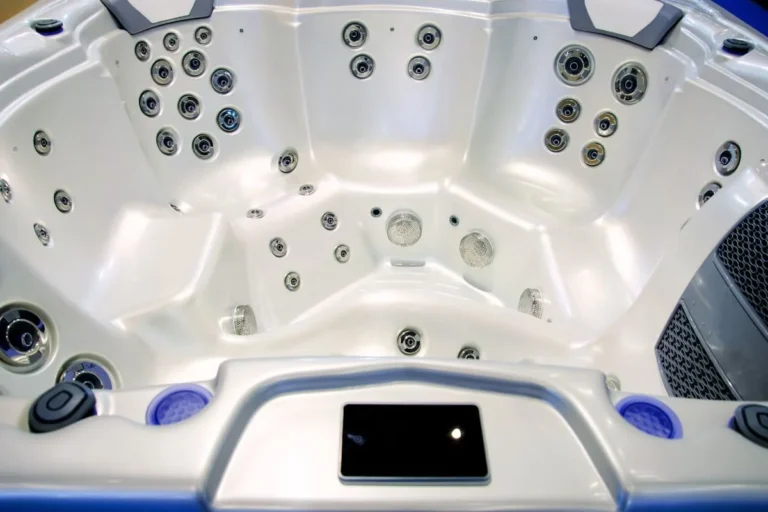
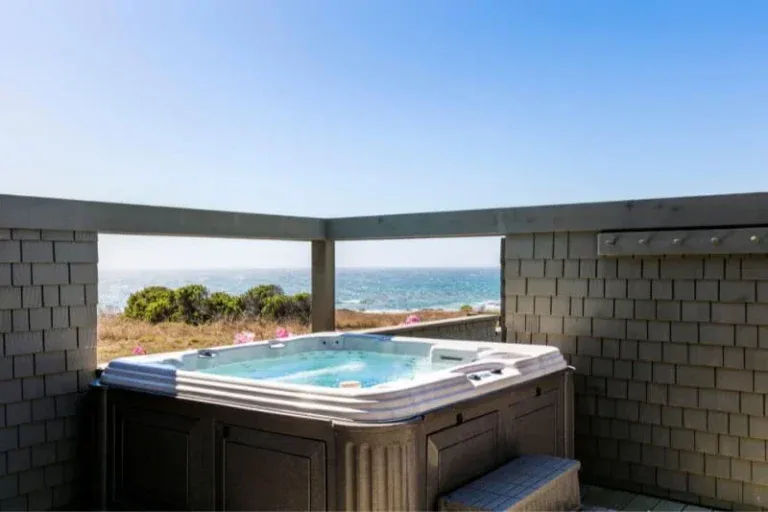

One Comment